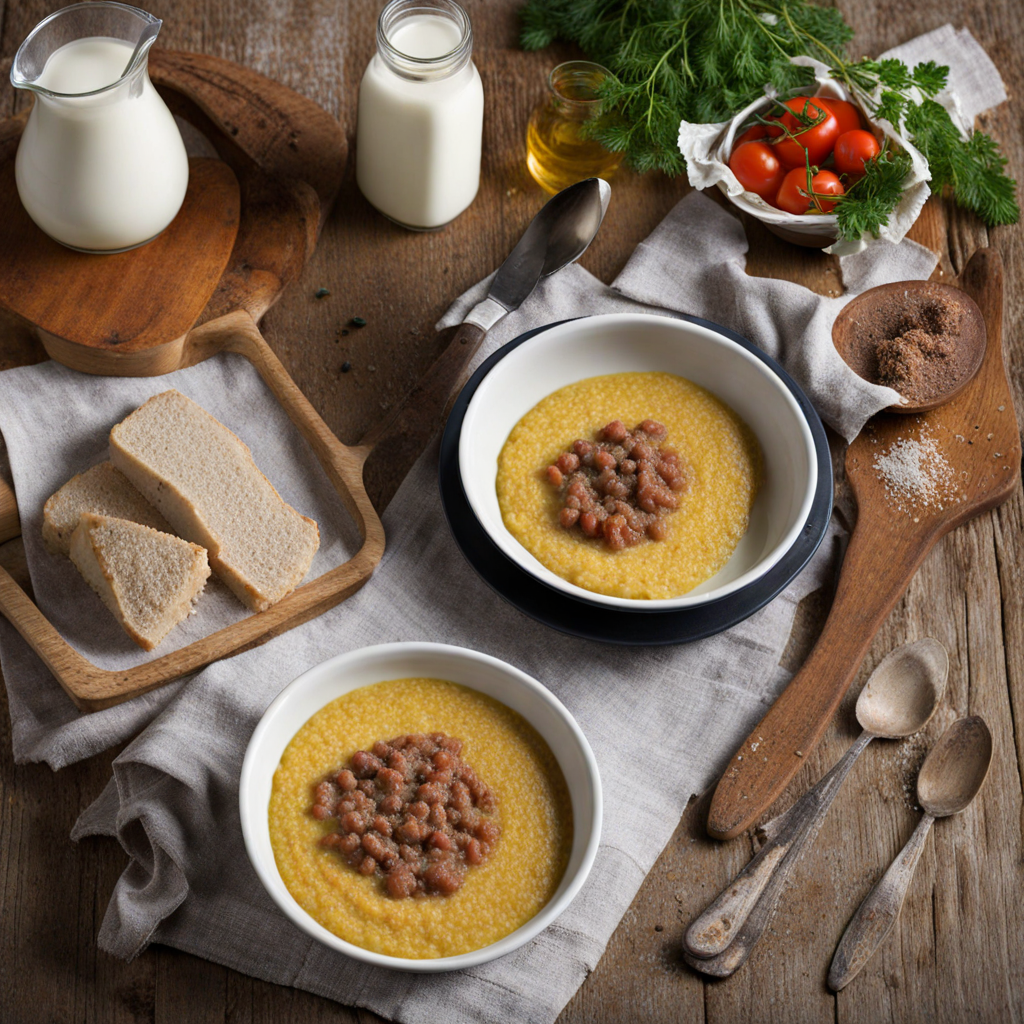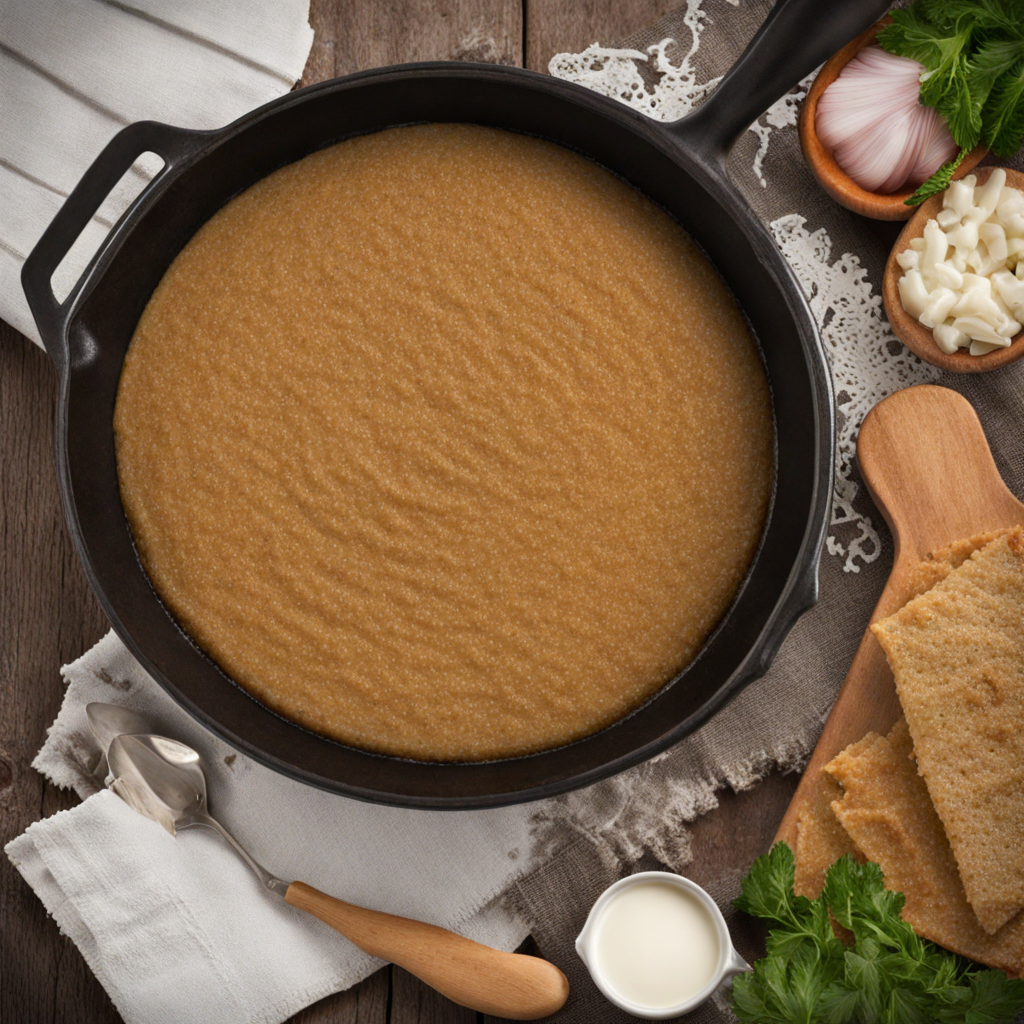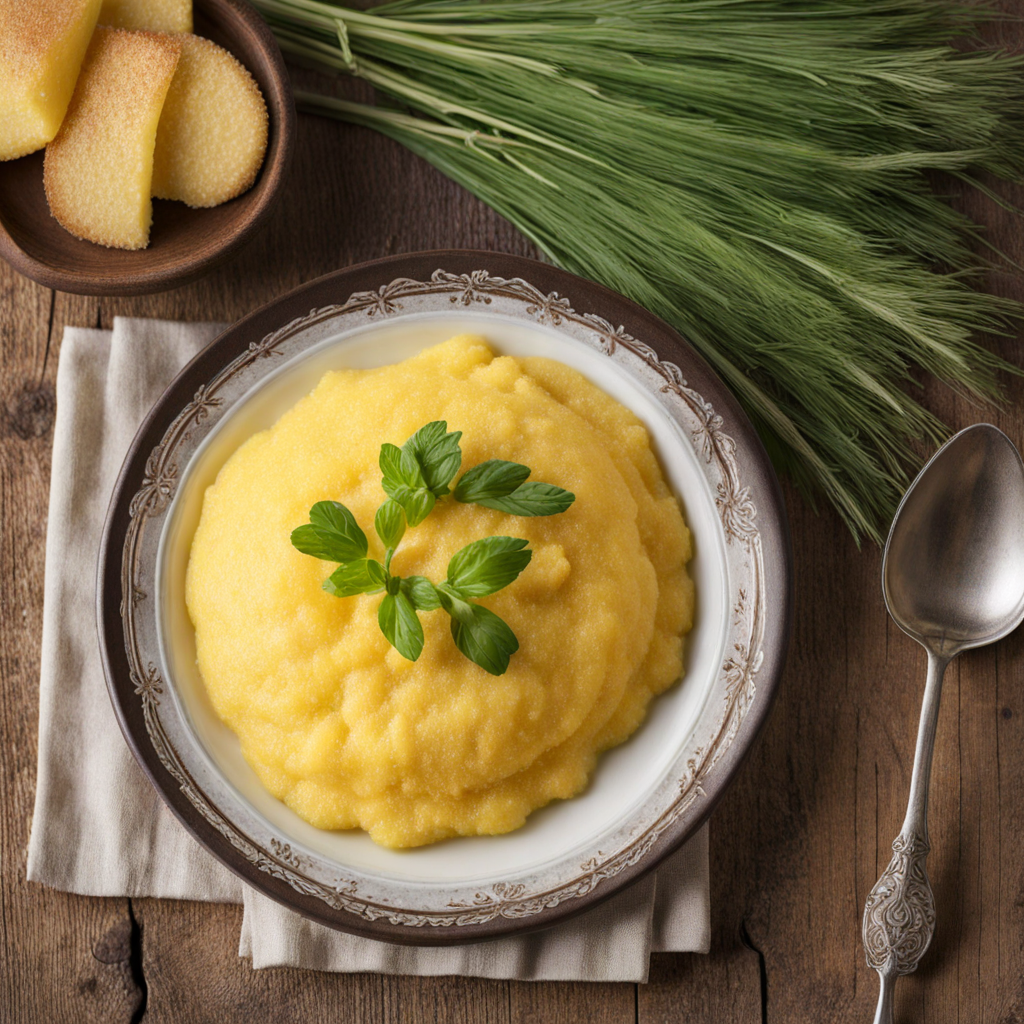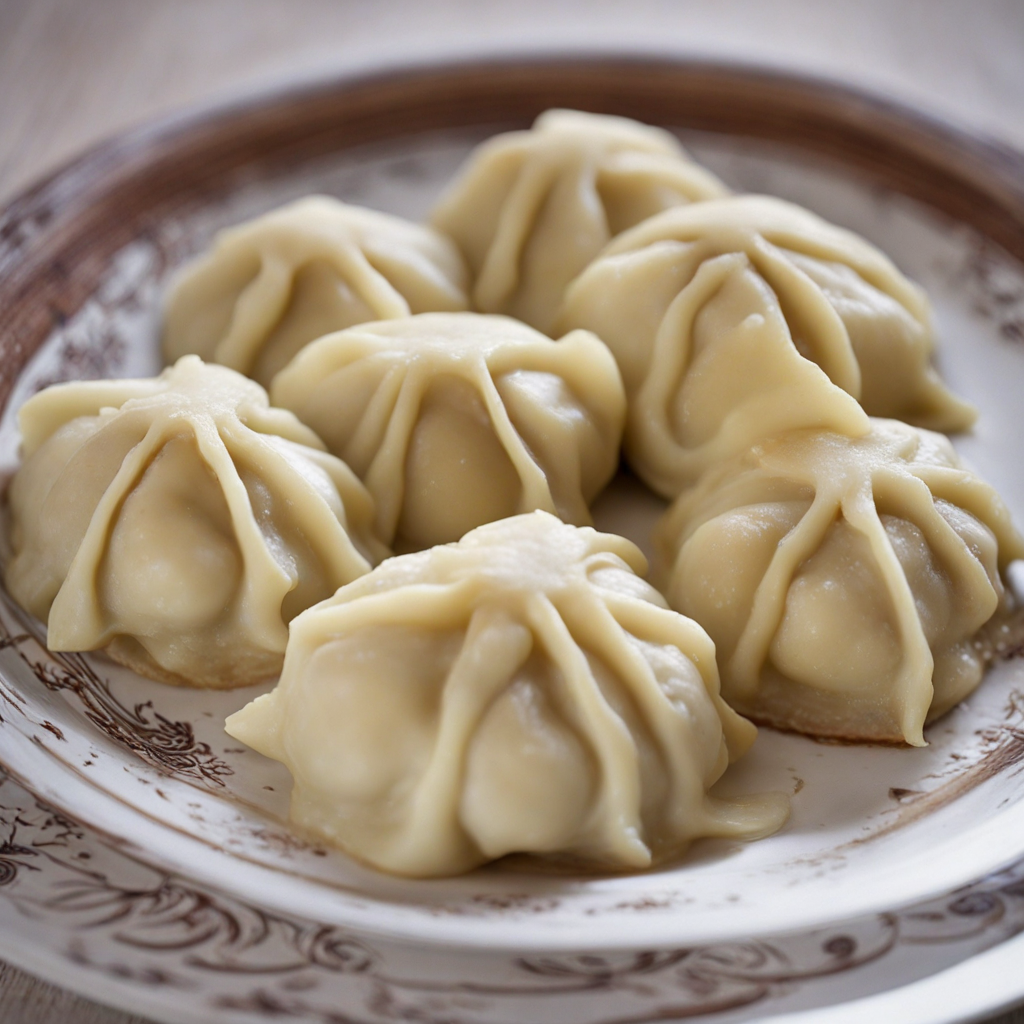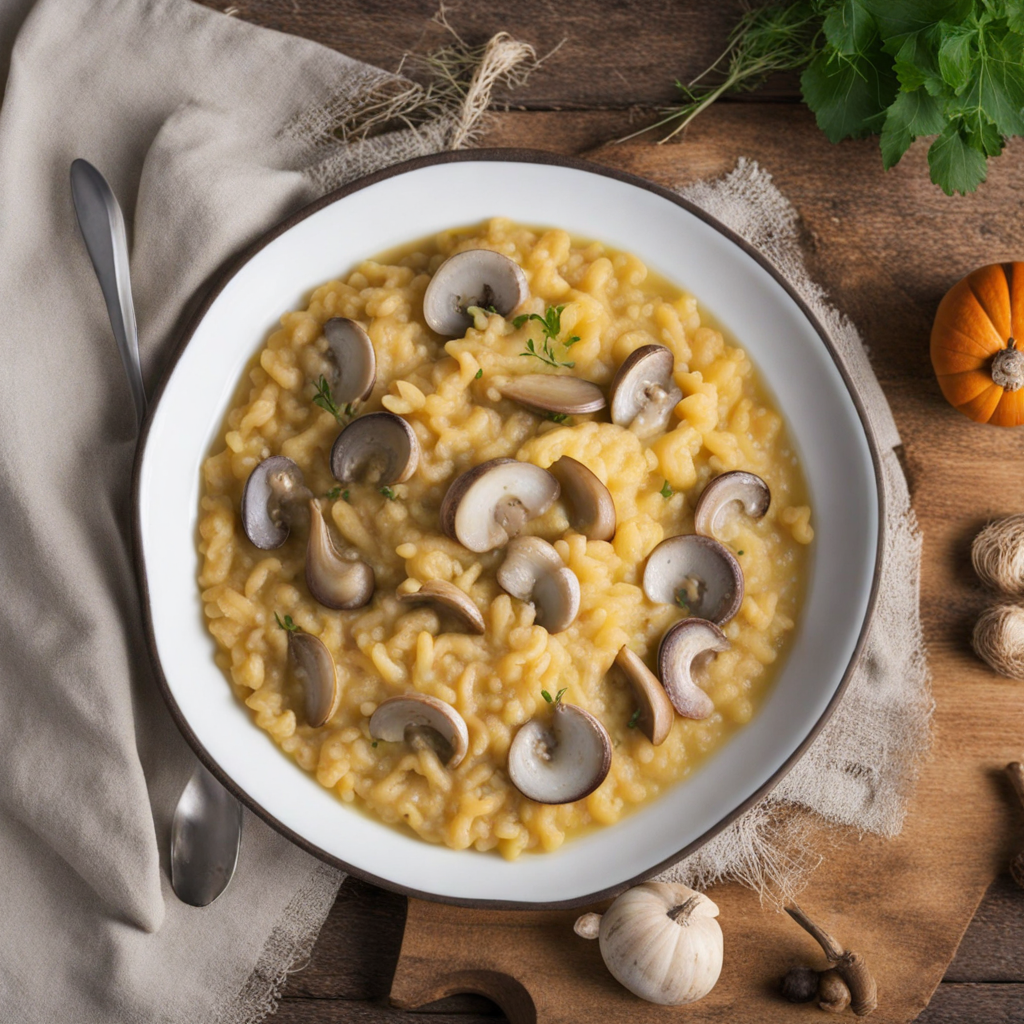Žganci
Žganci is a traditional Slovenian dish that embodies the rustic charm of Central European cuisine. This hearty meal is made primarily from cornmeal, which is cooked until it forms a thick, porridge-like consistency. The dish is often flavored with a touch of salt, and sometimes enriched with the addition of bacon or pork cracklings, which lend a savory depth to the otherwise simple base. Its texture is somewhat grainy, and it can be easily molded into a shape that makes it visually appealing on the plate. Typically served as a side dish, Žganci pairs beautifully with various Slovenian stews, meats, or even as a base for rich gravies. The dish is versatile, allowing for different variations depending on regional preferences. In some households, it might be accompanied by sautéed onions, mushrooms, or even served with a dollop of sour cream, enhancing its flavor profile and making it a comforting staple in many Slovenian kitchens. Each bite offers a taste of tradition, rooted in the agricultural practices of the past. While Žganci may be considered a humble dish, it is a celebration of Slovenian heritage, often enjoyed during family gatherings or festive occasions. It reflects the simplicity and heartiness of Slovenian cooking, showcasing how basic ingredients can be transformed into something profoundly satisfying. For those looking to explore new tastes, Žganci offers a unique blend of textures and flavors that captures the essence of Slovenian culinary culture.
How It Became This Dish
The History of Žganci: A Slovenian Culinary Tradition Žganci, a humble dish of Slovenian origin, encapsulates the essence of rural life, regional identity, and culinary heritage. Often referred to as a type of polenta or cornmeal porridge, Žganci has deep roots that stretch back to the agrarian lifestyle of Slovenia’s past. This dish is not just a staple food but also a symbol of Slovenian culture, reflecting the resilience, resourcefulness, and communal spirit of its people. #### Origins and Ingredients The origins of Žganci can be traced back to the 18th and 19th centuries when corn became a primary crop in the agricultural regions of Slovenia. Corn, particularly in the form of meal, was a critical food source due to its adaptability to the local climate and soil conditions. Žganci is traditionally made from coarsely ground cornmeal, which is boiled with water or milk until it thickens to a dense, porridge-like consistency. The name “Žganci” is derived from the Slovenian verb "žgati," which means "to burn" or "to scorch," referring to the cooking technique that involves sautéing the cornmeal before adding liquid. This method enhances the flavor, resulting in a slightly toasted aroma that is characteristic of this dish. In its simplest form, Žganci is seasoned with salt, but many variations exist, which incorporate additional ingredients such as herbs, butter, or even cheese. #### Cultural Significance Žganci is more than just a dish; it is a cultural artifact that embodies the collective memory and identity of Slovenian people. Traditionally served as a hearty meal, it has played a crucial role in the diet of rural families, particularly during the colder months when fresh vegetables were scarce. Žganci was often paired with rich stews, meats, or dairy products, providing a balanced and satisfying meal that sustained families through long days of hard labor. In Slovenian households, Žganci is associated with communal gatherings and celebrations. It is a staple during festive occasions such as harvest festivals and family gatherings, where it fosters a sense of togetherness. The preparation of Žganci can also be a communal activity, with family members coming together to cook and share the dish, reinforcing familial bonds and cultural traditions. Moreover, Žganci holds a special place in Slovenian folklore and cuisine. It is often mentioned in traditional songs and stories, symbolizing the simplicity and richness of rural life. In many regions, it is regarded as a comfort food, evoking nostalgia for home and childhood, and is frequently served in households where traditional Slovenian cuisine is cherished. #### Evolution and Variations Over the years, Žganci has evolved, adapting to changes in agricultural practices, availability of ingredients, and culinary trends. While the dish has retained its core elements, modern interpretations have introduced new flavors and textures. For example, some contemporary versions include the use of other grains such as buckwheat or millet, reflecting a growing interest in health and nutrition. Additionally, Žganci has found its place in the broader context of Slovenian gastronomy. As Slovenia has embraced its culinary heritage, there has been a resurgence of interest in traditional dishes like Žganci among chefs and food enthusiasts. In recent years, many restaurants have begun to feature Žganci on their menus, often elevating it with gourmet touches such as truffle oil, seasonal vegetables, or artisanal cheeses. This has allowed the dish to transcend its humble roots while still honoring its traditional essence. #### Regional Differences Slovenia's diverse geography has given rise to regional variations of Žganci, each reflecting local customs and ingredients. In the northern regions, such as Prekmurje, Žganci may be prepared with a richer consistency, often served with a hearty meat stew. In contrast, in the coastal regions, it may be accompanied by lighter seafood dishes, showcasing the adaptability of this staple food. Another notable variation is "ajdovi žganci," which uses buckwheat flour instead of cornmeal. Buckwheat has been a staple in Slovenian cuisine for centuries and is particularly popular in the Alpine regions. This version of Žganci is often served with sour milk or yogurt, providing a tart contrast to the earthy flavor of the buckwheat. #### Žganci in Contemporary Slovenia Today, Žganci continues to be a beloved dish in Slovenian households, and its significance goes beyond mere sustenance. It is often served during family celebrations, public holidays, and social gatherings, reinforcing its role as a symbol of hospitality and tradition. The dish is also a point of pride within Slovenian gastronomy, representing the country’s commitment to preserving its culinary heritage. In recent years, Slovenia has gained international recognition for its innovative and sustainable approach to food, with chefs and food artisans focusing on local ingredients and traditional techniques. Žganci, along with other traditional Slovenian foods, has become a part of this movement, highlighting the importance of culinary heritage in contemporary dining experiences. Moreover, the revival of interest in traditional Slovenian cuisine has led to the establishment of festivals and events celebrating local foods. These gatherings often feature Žganci as a central dish, demonstrating its enduring popularity and cultural importance. Food tourism in Slovenia has also increased, with visitors seeking authentic culinary experiences that connect them to the country's rich heritage. #### Conclusion Žganci is more than just a simple dish; it is a testament to Slovenia's agricultural history, cultural identity, and communal spirit. From its humble origins as a staple food for rural families to its contemporary status as a celebrated component of Slovenian cuisine, Žganci embodies the resilience and adaptability of the Slovenian people. As Slovenia continues to embrace its culinary heritage in an increasingly globalized world, Žganci remains a beloved symbol of tradition, community, and the enduring power of food to bring people together.
You may like
Discover local flavors from Slovenia


